The Arabs and ancient Greeks believed that the Tiger’s Eye gave clarity of thought, activated personal power and integrated the spirit with the energy of the earth. This uniquely beautiful gemstone is still widely used today to promote spiritual and mystical benefits.
In jewellery, the stone’s beauty and mystery are complemented by its versatility and affordability.
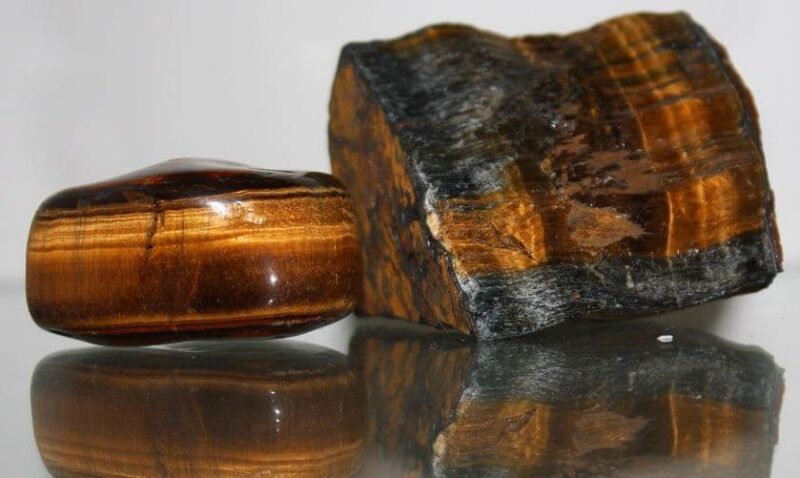
Tiger’s Eye is a gemstone widely used in jewellery for its beauty, mysticism and versatility.
It’s also very affordable. It is traditionally used in ninth wedding anniversary jewellery such as earrings, necklaces, rings, etc.
Tiger’s Eye combined with other stones in a piece of jewellery promotes rare beauty and originality.
It can be used in a variety of design styles, from costume jewellery to innovative designs and classic jewellery. This shows the versatility of a gemstone with unique colours and effects.
Tiger’s eye belongs to the quartz family and is formed from hawk’s eye, a classic example of pseudomorphism (i.e. the internal transformation of the mineral, but the external appearance remains that of another mineral).
Crocidolite, which is very dense and has a fibrous structure in the form of wavy parallel bands, undergoes a process of replacement by quartz.
During this process, the iron in the crocidolite dissolves and stains the quartz, giving the gemstone colours ranging from yellow to reddish brown in bands, with a lustrous and silky appearance.
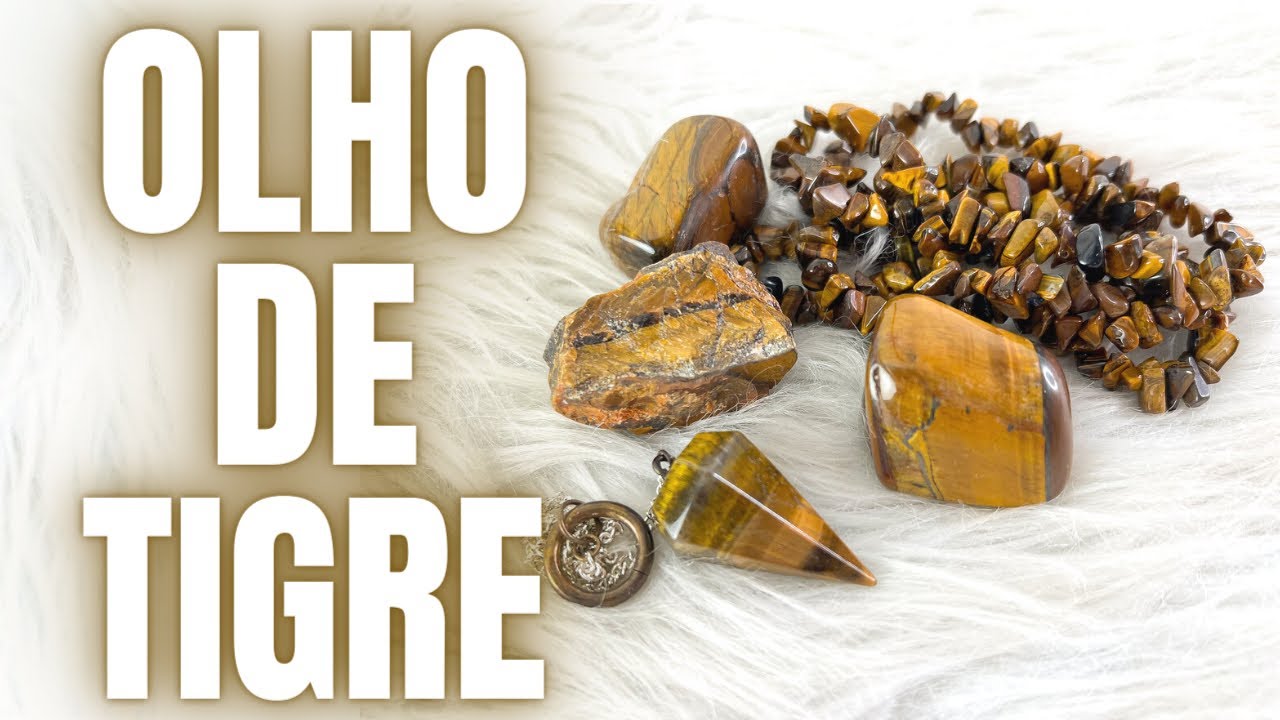
Pedras Olho de Tigre, Olho de Boi e Olho de Falcão
When the iron content of crocidolite is high enough, the yellow colour becomes visible in the body of the tiger’s eye, where tiny particles of limonite are scattered between the quartz fibres.
It takes its name from the chatoyancy or chatoiance effect. This optical effect is caused by the iridescent inclusions in the body of the mineral which, when structured in a single direction, create a band of light across the gem, giving it the appearance of a cat’s eye.
Chat is the French word for cat.
Tiger’s Eye
Gemological Characteristics
- Group: Silicates
- Mineral Class: Quartz
- Crystal system: trigonal
- Chemical formula: SiO
- Hardness: 7 Mohs
- Density: 2.65
- Fracture: non-existent
- Colour: yellow-brown
- Line colour: white
- Gloss: glassy to silky
- Fluorescence: absent
- Fracture: splintered or conchoidal
Tiger’s eye is composed of silicate, iron dioxide, sulphur, manganese and traces of chromium.
Origin
- South America
- AUSTRALIA
- UNITED STATES
- About Namibia
- About Namibia
- INDIA
- Myanmar
The warmer hues are more common, but some rare stones can turn blue (called hawk’s eye) if the pseudomorphism is not complete.
Red stones are obtained by heat treatment. Some green stones are rarely found.
Treatments are not very common.
Cutting is mainly done on cabochons, which allow the chatoyance effect to be seen more clearly.
They have a silky lustre and a smooth surface.
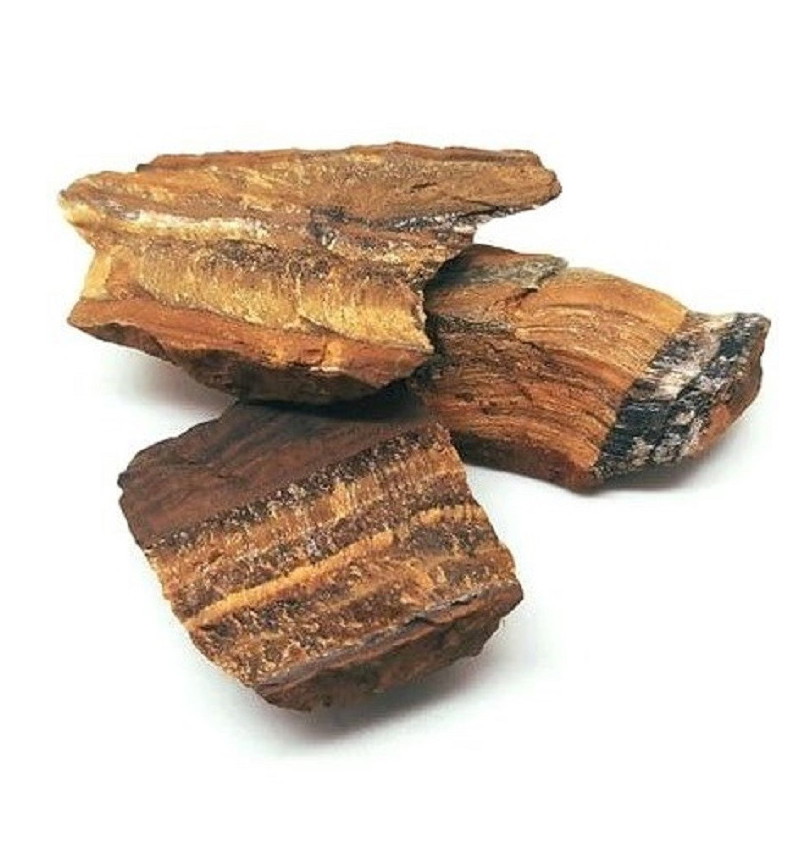
This cut gives the stone the look of a large animal’s eye. Tiger Eye is often worn with gold because the metal brings out the beautiful colours of the stone.
Marra Mamba
The tiger’s eye marra mamba is another of Australia’s great gemstone treasures.
It is found in a small deposit in the Hamersley Ranges in north-western Australia.
The deposit is the only known source in the world for this richly coloured stone.
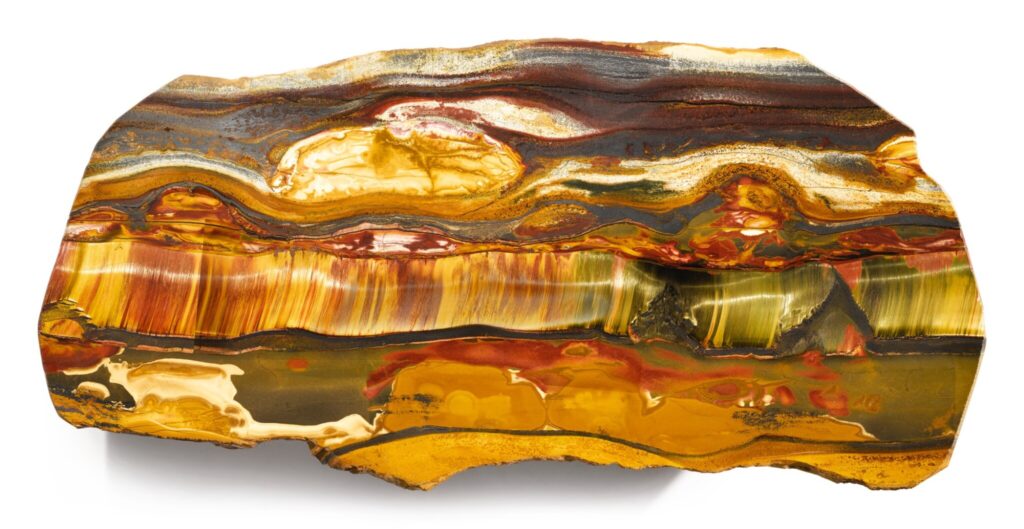
Marra Mamba Tiger’s Eye occurs in isolated pockets in seams of blue crocidolite, usually showing beautiful internal patterns of lustrous metallic hematite.
Marra mamba is related to tiger iron, an altered rock composed of tiger eye, red jasper and black haematite.
Marra Mamba tends to be more coppery than most tiger’s eye, with more haematite.
The best pieces have a general reddish colour.
Marra Mamba is unique, hard to find and very expensive when found.
It takes its name from the area where it was formed millions of years ago in the great iron-rich geological formation of the Pilbara region.
Marra Mamba Tiger’s Eye is not sold wholesale. The mine owner in Australia only sells small quantities at a high price.
Types of cuts
As we have already said, the most common cut for Tiger Eye is the cabochon, in various shapes such as square, round, oval, etc., as you can see in the figure below.
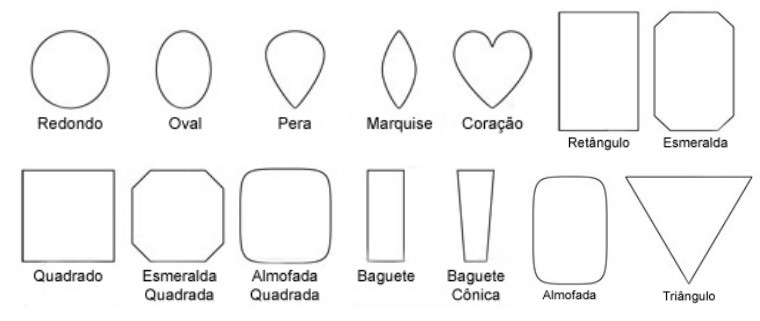
Faceted shapes are rarer and are used to add a special touch to the design of pieces. Round shapes (spheres) and tiger’s eye beads are often used in necklaces and earrings.
Therapeutic properties
Mystics believe that this gemstone gives courage, self-confidence and determination. It is said to possess great spiritual power.
It helps those who wear it to enter a vibrational realm where personal power is combined with divine power, allowing the person to realise and fulfil all their intentions. It positively strengthens the mental aspect, making the person believe in their strength and power to fulfil.
They believe that the power of the stone lies in the mind and not in the body.
Known in Tibet as Japa Mala, in the East as Masbaha and in Greece as Comboloi, the male bead is used in all religions for meditation, prayers and invocations.
Treatments and imitations
Tiger Eye stones are not normally treated or enhanced.
In certain situations, dyeing and heating can be used to produce redder stones or stones in various shades of brown.
In some rare cases, nitric acid can be used to lighten very dark colours.
When tiger’s eye is cut and a little of its host rock remains, it is marketed as ‘tiger’s eye matrix’.
Imitations of tiger’s eye can also be found, usually made from resin, glass or plastic ceramics.
Publicações Relacionadas
Sapphire is the purity of nature and a symbol of honesty
Jade stone - characteristics, colour, classification and cutting
Amethyst stone - characteristics, marketing and valuation
Characteristics of the Paraíba Tourmaline, a rare gemstone
Agate Stone - Characteristics, Types, Colour and Cutting
Tourmaline: Learn about its characteristics and varieties
Characteristics of Topaz and Imperial Topaz gemstones
Quartz Stone - Characteristics, Colours and Varieties
Opala é uma das mais belas pedras preciosas encontradas no Brasil
Ruby Stone - Characteristics, Colours and Cutting
Aquamarine Stone is used in the jewellery industry - characteristics
Diamonds have 4 basic classifications, weight, colour, purity and cut
Emerald Stone - Characteristics, varieties and quality
Identifying a gem is a difficult task
The malachite stone is a distinctive gemstone - Features
Jewellery made from different types of coral - Features
Pindobaçu (BA), known as the capital of emeralds
This post is also on:
![]() Português
Português ![]() English
English ![]() Deutsch
Deutsch ![]() Español
Español ![]() Français
Français



















